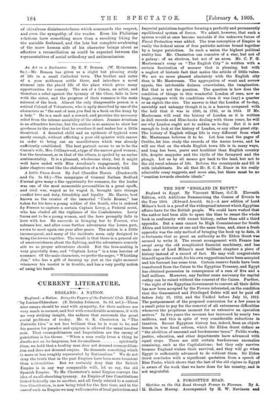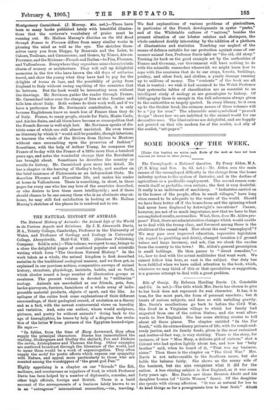Sketches on the Old Road through France to Florence. By
A. H. Hallam Murray. Accompanied by H. W. Nevinson and Montgomery Carmichael. (J. Murray. 912. net.)—There have been so many books published lately with beautiful illustra- tions that the reviewer's vocabulary of praise must be running out. Mr. Hallam Murray's Sketches on the Old Road through France to Florence differs from many similar works in pleasing the mind as well as the eye. The sketches them- selves carry you from Dieppe, by Beauvais and the Loire, to Cahors, Toulouse, and Carcassonne, and thence, by Nimes, Aix-en- Provence, and the Rivieras—French and Italian—to Pisa, Florence, and Vallombrosa. Everywhere they reproduce some characteristic charm of scenery or architecture. They will call up delightful memories in the few who have known the old days of vetturino travel, and show the young what they have had to pay for the delights of trains de lure, and the possibility of going from England to Italy without seeing anything of the countries that lie between. But the book would be interesting even without the drawings. Mr. Nevinson guides the reader through France, Mr. Carmichael takes over the charge of him at the frontier and tells him about Italy. Both writers do their work well, and if we have a preference for Mr. Nevinson's contribution, it is only because Englishmen know so much less of France than they do of Italy. France, to many people, stands for Paris, Monte Carlo, and Aix-les-Bains, and all these have become so cosmopolitan that the French flavour is well-nigh lost. Mr. Nevinson speaks of dis- tricts some of which are still almost unvisited. He even traces an itinerary by which it " would still be possible, though laborious, to traverse the whole of the Riviera from Hyeres to Mentone without once encroaching upon the preserves of fashion." Sometimes, with the help of Arthur Young, he compares the France of to-day with the Franco of a little more than a hundred years ago, and notes the wonderful change that the Revolution has brought about. Sometimes he describes the country or recalls its history. Mr. Carmichael goes more into detail. He has a chapter on the burning of Shelley's body, and another on the brief existence of Pietrasanta as an independent State. He describes Florence and Florentine life, and makes his reader at home in Vallombrosa. There is something, in short, in these pages for every one who has any love of the countries described, or who desires to love them more intelligently; and if there should chance to be one among them who is an obstinate stay-at- home, he may still find satisfaction in looking at Mr. Hallam Murray's sketches of the places he is resolved not to see.











































 Previous page
Previous page